Tu carrito está vacío
MOTO Products
shop your way
Choose a shopping experience
Same great Risk Racing products, 3 completly different ways to shop them.
Choose a shopping experience
Same great Risk Racing products, 3 completly different ways to shop them.
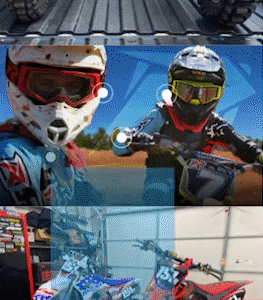
Lifestyle Shopping
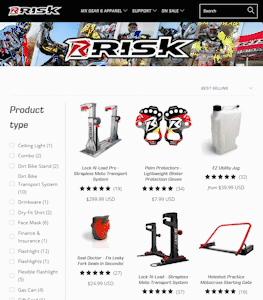
eComm Shopping
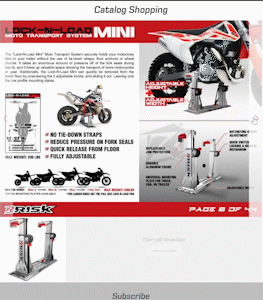
Catalog Shopping
MOTO TYRES
MOTO Gear & Apparel
Can You Street Legalize a Dirt Bike?
gennaio 04, 2022 10 lectura mínima
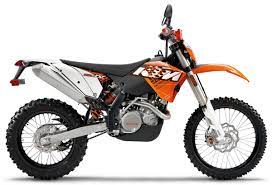
So, you want to roam the street riding your dirt bike?
But then again, your desire was overshadowed by doubt, knowing full well that dirt bikes are not exactly allowed by law on the streets. And now you’re wondering if it’s possible to street legalize a dirt bike.
Fortunately, we have the answer right here, right now.
Simply put, yes, you can street legalize a dirt bike. But it requires an elaborate process involving compliance on installing several motorcycle components that are not commonly found on a regular dirt bike. Most of these devices are designed for street and road safety.
Furthermore, you may have to alter the electrical system of your bike to match it with the standards of DOT.
The steps may be pretty demanding but, in the end, having your dirt bike legalized for street use can be worth the effort and time.
Learn more about turning your dirt bike street-friendly in this guide.

Is Riding a Dirt Bike on the Street Illegal?
Yes, riding a dirt bike on the street is generally considered illegal in many states.
Although dirt bikes are relatively similar to a standard motorcycle, it is designed for off-road use.
Hence, using it on the street may come with a higher level of danger.
Nonetheless, there are three primary reasons why dirt bikes cannot be legally ridden on the streets.
-
Lack of Safety Accessories
Unlike street-legal motorcycles, dirt bikes do not have safety equipment such as mirrors, turn signals, headlights, taillights, brake lights, etc.
Without these mandated components, anyone riding a dirt bike can find themselves in more harm when driving on public roads.
-
Smog Emissions
The standards and regulations on off-highway vehicles (OHV) for emissions are quite different from common motorcycles.
OHVs are mostly operated with intense power considering they are designed for uneven and challenging terrains.
The engines have to work harder than that of an average motorcycle. As a result, they are not as efficient and burn more fuel. Thereby releasing more CO2 into our atmosphere.
The exhaust system is designed differently as well. Street legal bikes have exhaust that are meant to stay within a certain decibel range, as well as keep emissions down. While off-road motorcycles on the other hand have little to no regulation on noise and pollution.

-
Dirt Bikes Are Mostly Unregistered Vehicles
It is not strictly mandatory to get a license plate for your dirt bikes if you use them off-road or within your private property.
Although you are supposed to register the transfer of sale for your dirt bike at your local motor vehicles registration office, other mandatory licensing can be withheld, unlike regular vehicles.
Due to these legal restrictions, local governments do not gain any revenue from dirt bike riding within public roads.
Hence, economically speaking, unregistered dirt bike riding pays zero contribution to the area’s income as opposed to registered vehicles which have all the rights to use the street roads and highways.

Dirt Bike Laws You Need To Know
Before riding your dirt bike, it’s always wise to know the laws surrounding the said activity.
As much as it is fun to traverse the road with your dirt bike, there are potential harms that could come your way or you can inflict on others.
That’s why the government will have to regulate dirt bike riding to ensure that nobody crosses the line.
Where Can I Ride My Dirt Bike Legally?
One of the first things you need to know when riding a dirt bike are the spots and places where you can do it legally.
Due to the nature of dirt bikes involving their power requirement, noise, and inherent design for off-road use, it is not surprising that you can use them anywhere, anytime.
Here are the places where you can ride your dirt bike without breaking the law.
Motocross Tracks
You may have seen a motocross track on a sports coverage of a race, or you may have visited one yourself.
Nevertheless, the tracks complete the dirt bike competition and employ a sort of exclusivity for its use.
A motocross track typically stretches one to three miles in length. It is designed with many turns, step-ups and downs, table tops, ruts, and other obstacles.
Learn more about motocross tracks when youclick here.
To get inside a motocross track, you need to check-in and pay an entrance fee. On top of that, you need to secure the right gear such as body armor, helmet,goggles, and boots.
If you are underage, make sure you have a signed consent or release from your parent or guardian.

State Trails and Off-road Riding Parks
Some states have trails, and off-road parks wherein dirt bikes are allowed to pass through. Others can be very particular with the kind of vehicle they allow.
Nevertheless, a state trail can be a great place for practice if you’re a beginner. Unlike a professional motocross track, a state trail could have fewer complex obstacles that leave amateur dirt bike riders frazzled.
If and when you decide to go riding on your dirt bike on a state trail, make sure to have the following with you.
- Registration sticker
- Safety Riding gear
- Exhaust sound level limit
- Spark arrestor
- Signed waiver or consent for underage riders
There are also several social advantages when you go on a state trail. From time to time, it is not unusual to meet a fellow dirt bike enthusiast and make a connection.

Private Property
If you have just started learning the basics of dirt bike riding, the best place for you to practice is inside your property. That is, however, if your area is wide enough.
You also need to consider your proximity to your neighbors, knowing full well that dirt bike riding can produce a substantial amount of smoke emission and a familiar but disturbing noise.
If you’re living in a close-knitted area, check with your local government if you’re allowed to practice in your backyard.
Places Where Dirt Bike Riding Is Most Likely Illegal
As exciting as riding a dirt bike is, you should be aware that you can’t just do it simply because you feel like it. For starters, there are areas where dirt bikes are not supposed to be used.
Public Roads
It’s unlikely that you would find dirt bikes in neighborhoods because driving them on the street or any public road is illegal.
Dirt bikes have more emissions than regular motorcycles. Also, they lack standard safety components for street use, such as rearview mirrors, brake lights, and turn signals.
Hence, if you drive a dirt bike on the road, the likelihood of getting into an accident is higher.
Neighborhood
Dirt bike riding can be a nuisance in the neighborhood and residential roads. Aside from the lack of safety equipment and the added pollution, such activity produces excessive noise.
Although not all states uphold the same laws, almost all local government regulations are consistent when it comes to dirt bike riding.
Nevertheless, it is still best to consult with local authorities.
Sidewalks
This goes without saying, but dirt bikes should never be driven on the sidewalks along with other motorized vehicles.
Sidewalks are exclusively for people to walk on. Therefore, riding a dirt bike on these exclusive pavements is not just illegal but utterly disrespectful.

What Are the Penalties for Riding Dirt Bikes in Illegal Places?
Once you violate the laws on dirt bike riding, you should be ready to face its corresponding penalties.
Every state may vary on its imposed consequences for violators as well as the classification of offenses.
Nonetheless, the following penalties are pretty standard for rule-breaking in which dirt bike riding is involved.
- Citation
- Fines
- Towing and storage fees
- Impoundment

Do I Need a Drivers License To Ride a Dirt Bike Off-Road?
If you are riding a dirt bike off-road or in designated (legal) places, you don’t need to secure a driving license. This is why many states allow minors to ride a dirt bike off-road as long as there is a waiver or written consent signed by a parent or guardian.
However, if you register your dirt bike for street legal use, you need to make sure you have your driver’s license with you all the time.
How Do You Register A Dirt Bike for the Road?
Dirt bikes do not require a motorcycle license. But if you wish to ride one on a public road, you can register your dirt bike.
However, not all dirt bikes can be registered unless you have significant customization.
Nonetheless, some dirt bikes can be registered without altering or adding mandatory equipment. The most quintessential example is the dual-sport bike.
A dual-sport bike is intended to be used for long-distance travel on pavements and regular off-road rides. Therefore, it is legally mandated to be registered for licensing.
So, if you’re an adult with a driver’s license and you wish to ride this type of dirt bike on the road, you can do so just as long as you secure the license plate and registration.

How Can I Make My Dirt Bike Street Legal?
As mentioned before, dirt bikes can become street legal if you employ proper customization involving vital features.
There are two reasons why people would seek a license plate registration for their dirt bike.
First, some riders opt to convert their dirt bike to a regular motorcycle for commuting purposes which means it entails the permanence of their choice.
Second, these dirt bike owners seek duality of purpose for their ride. This suggests that they intend to use their dirt bike both off-road and on-street roads.
Whatever your intention is, the first thing you need to do is make sure that the dirt bike has DOT-compliant components.
And so, in the interest of making things easier for you, we are providing the equipment and accessories you need to secure when registering your dirt bike.
- Headlight
- Tail Light
- Turn Signals
- Speedometer
- Rearview Mirrors
- Horn
- Exhaust
- Kickstand
- License plate bracket
- Tires
Headlight
A headlight is a critical requirement for an on-road dirt bike.
Since you will be using your dirt bike on a public road and will probably use it at night, installing a headlight only makes sense. Without this device, you will most likely fail to illuminate your path, which increases the likelihood of collision with other vehicles.
Furthermore, you could hit an individual on the street. Therefore, you need to ensure that you only install the best headlights that fit your dirt bike application.

Tail Light
You can’t spell road safety without a tail light. This device located at the rear end of the motorcycle alerts other vehicles of your movement as they follow behind you on the road.
A tail light with adequate illumination allows other motorcycles and other vehicles to gauge the size and shape of your dirt bike. This way, they can estimate the needed distance to guarantee safety and traffic efficiency.

Turn Signals
Turn signals are vital when changing directions, particularly turning to a specific street. Without this device, other vehicles will find it difficult to decipher your next moves, which often leads to road accidents.
So, by installing turn signals, you can alert motorcycles and automobiles whenever you need to change directions.
With a regular dirt bike, turn signals are often left out of the OHV design because traversing off-road terrains are done by a group with a specific direction.
Furthermore, motocross competition is regulated by guidelines that eliminate the need for turn signals.

Speedometer
Public roads have speed limits for safety reasons. Hence, if you’re going to register your dirt bike, you have to install a Speedometer so you can keep track of your speed while driving.
Likewise, this device can provide you with vital information about your driving and the condition of the dirt bike, such as fuel level, total distance traveled, and engine temperature if you choose a feature-rich speedometer.
Rearview Mirrors
Dirt bikes often lack mirrors because there is usually zero need to monitor other riders behind you, and they would be the first pieces to break off in the event of a crash.
However, for your dirt bike to be street legal, installing mirrors are non-negotiable.
After all, they ensure your safety since it’s the only way you can get a good view of other vehicles tailing you on the road.

Horn
A horn is not just a noisemaker. It is a crucial part of your dirt bike’s safety system.
Most dirt bikes lack horns because they are rarely used off-road and are entirely omitted on a motocross track. But on the streets, a horn is one means of communicating and alerting other vehicles to avoid collisions and crashes.
Therefore, it’s a device you can’t miss forgetting when setting up your bike for legal street use.
Exhaust Condition
Emission testing is a standard requirement for license plate registration in the country.
However, emission standards could differ from one state to another. Therefore, your best chance of getting your dirt bike street legalized is to adhere to your state’s standards.
The first thing you need to do is detect if your dirt bike is fitted with the recommended exhaust. Otherwise, you will have to arrange an installation for the said component.
Once the exhaust is crossed out of the checklist, you need to assess the concentrations of gas emissions and noise levels. Then, go back to the standards and make sure the said attributes are in the passing range.
Kickstand
Most dirt bikes do not come with a kickstand. But it is a requirement for the street legalization of your dirt bike. Hence, you can have it installed in a shop or buy one and install it yourself.
A kickstand or side stand is essential in parking your dirt bike, especially in public areas.

License Plate Bracket
A lot of states are keen on how you position your plate. The best way to get this right is to check the DMV requirements on license plate placement where you live.
Nonetheless, you will need a bracket to hold your license plate once the registration is approved.
Tires
Off-road tires are different from tires used on public roads. For starters, since off-road terrains are rough and pretty challenging to traverse, most tires are designed with a very aggressive tread pattern that is not ideal for road use.
Nonetheless, the required tires for license plate registration have to be DOT approved. Fortunately, some dirt bike tires correspond well to the DOT standards. However, it doesn’t hurt to double-check.

Conclusion
Legalizing your dirt bike for street use may require major alterations. However, these changes can improve the safety of your motorcycle, not just on the streets but even as you use it off-road.
Nonetheless, there is one thing that you need to keep in mind when installing the recommended parts on your dirt bike.
Make sure that these equipment and devices are of high quality and are DOT-compliant. Otherwise, you are just wasting money.
On the other hand, if you wish to retain your dirt bike on off-road terrains, take advantage of the exclusive places you can practice your maneuvers and stunts, such as a motocross track.
Dejar un comentario
Los comentarios se aprobarán antes de mostrarse.
Subscribe
Sign up to get the latest on sales, new releases and more …
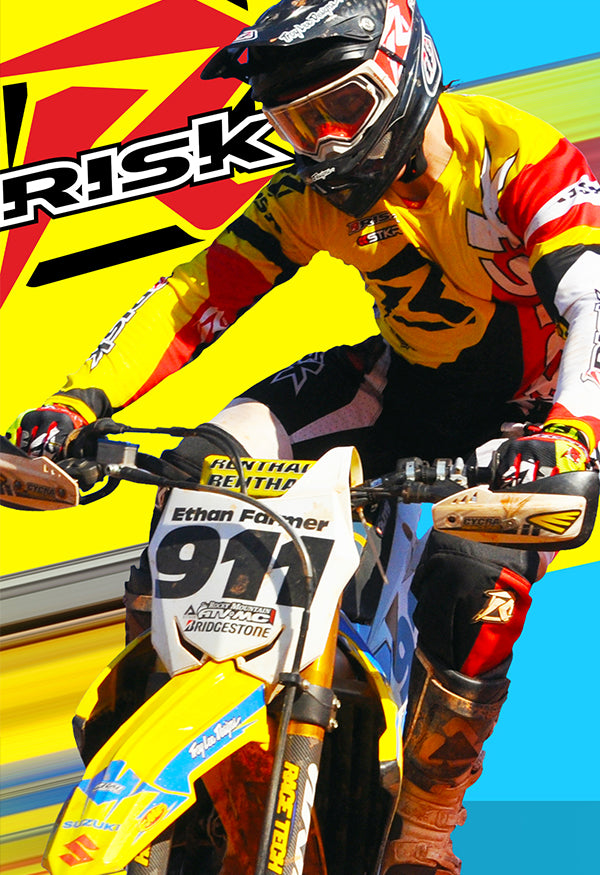
Limited Time 10% Off
Save on your 1st order and get email offers when you join.
Eligible for first-time website purchases only. Emails may take a few minutes to process and could get flagged by email providers as junk so be sure to wait a little bit and check your junk and/or spam folders.

 UK / EU▾
UK / EU▾



























